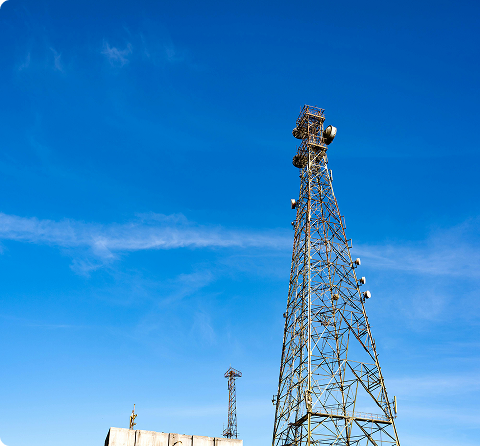Telecom
Powering Pakistan’s telecom future-efficiently and sustainably
In Pakistan, energy costs account for 60–70% of tower OPEX—rising to 78% in off-grid areas. With growing data demand, energy usage and carbon emissions are accelerating fast. Our Telecom Energy Infrastructure Solutions, powered by SPARK™ RMS and Smart Armored Cabinets, enable:

Up to 99.9%
network uptime

Up to 50%
OPEX reduction

Significant carbon
emission cuts

Real-time energy
monitoring & control

Secured energy backup
in high-theft zones
Offerings
SPARK™ RMS
Legacy RMS lack control, visibility, and scalability. SPARK™ solves that with:
- Intelligent Linux-based microcontroller
- Real-time telemetry: Battery, Fuel, Grid, & Load
- OTA updates & remote diagnostics
- AI-based anomaly detection
Impact
![]() 55% fewer site visits
55% fewer site visits
![]() 5% uptime gain
5% uptime gain
![]() 7000+ towers optimized
7000+ towers optimized


Smart armored power cabinets
- Tamper-proof, theft-resistant build
- Smart lock with app & RMS integration
- Sensors for smoke, vibration, temperature, humidity
Impact
![]() 99% theft reduction
99% theft reduction
![]() Secure access control
Secure access control
![]() Lower Operational costs
Lower Operational costs
Trusted by industry leaders






Our proud partner
Providing leading technology solutions for DC power systems for tower sites and datacenters.

Grid / Fuel Theft Monitoring & Control
Problem
Electricity & Fuel are two cost drivers at telecom sites. Fuel theft further drives up the operational cost.
Solution
Hardware deployment on-site inclusive of Anti-Theft Meters
for real time theft detection, fuel level sensors and controllers, and reporting on SPARK application.
Impact
Theft cases detected on 20+ sites were rectified within 24-hours. This has resulted in monthly OPEX savings of 15-20% per site.
Read More

Battery BMS Integration
Problem
Product life and warranty insurance covers a period of 5-
years,
however faults due to poor upkeep of
critical parameters such
as temperature, Depth of Discharge (DoD),
and backup are not covered under insurance.
Solution
Insights over SPARK can help identify the problem based on critical parameters and thus improve operational efficiency and life.
Impact
Requirement of field visits for analysis and troubleshooting has gone down by 70- 80%.
Read More
